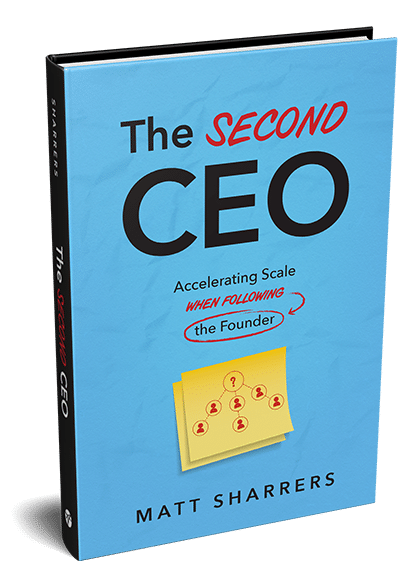The Second CEOs’ Guide for the First 90 Days


The second CEO's job often comes with immense responsibility and little guidance. Whether scaling up growth momentum or navigating the friction in differences with the founder CEO, new CEOs may find that their first 90 days are often the most challenging part of their job. What are the common friction points between second CEOs and founders, and how can CEOs successfully prime their business for growth in their first 90 days?
In this blog post, we join a discussion between Mike Hoffman, SBI CEO, and Matt Sharrers, SBI Executive Chairman, as they explore why founder CEOs are not always the best at helping their companies scale and how second CEOs need to take a different approach to company leadership.
Getting It Right as a Second CEO
“A founder starts a business not because they want to be a CEO. They start a business because they see a problem. They're driven by solving said problem, whether product or service; they become a CEO by default,” explains Matt when asked about how CEOs are chosen.
Founder CEOs are often the brainchild of any successful venture. They are risk-takers, highly driven, and are always willing to go the extra mile to make their vision a reality.
However, founder CEOs may find themselves out of their element when it comes to driving growth and scaling the business. Moreover, the thought of handing off their business to someone new, especially if they're external, is understandably harrowing.
Matt agrees with this sentiment, adding: “So many of the founders that I spoke to in the research for the book wanted to leave the role earlier, but their commitment to people, their nerves of what's going to happen to the business because when you start a business, it becomes like a child.”
Navigating this expectation is often the biggest hurdle for second CEOs, who have to ease the friction felt when trying to implement a new approach to value creation. Matt, based on his experience as the second CEO of SBI, believes that founder CEOs tend to focus more on the people when deciding on value creation plans, whereas second CEOs need to focus on the levers and capabilities instead.
The second friction point that CEOs often face is when they try to control the number of running initiatives. Matt explains that founder CEOs tend to want more things to happen—new ideas and more initiatives with wider scopes. However, second CEOs working to scale up operations have to be more cognizant of the possible impact of new implementations. As Matt describes it: “You got to be able to say no to the good ones to say yes to the great ones.”
So, what advice does Matt have for second CEOs who are going into their first 90 days? While it may be challenging for many who come from an internal position, the second CEO must assess everything objectively—like it’s their first day in the company. Cut through the emotional biases and see the business in its true reality. Only then can the leadership team transform the company for growth.
Once the second CEO has a clear view of the business situation, they should evaluate whether they have the right people in charge of business functions. For CEOs who struggle to be objective in their assessments, Matt has a tip for them: ask the leaders to explain the core processes they use to run their functions. Breaking down the job scope into a set of data points removes any emotional attachment and allows the CEO to pinpoint any shortfalls in capabilities objectively.
For CEOs to be far removed from the emotional attachments in the business also comes at a price of not having much guidance from within the company. Hence, Matt’s final piece of advice is for second CEOs to seek out their community of peers and mentors. Whether they are other second CEOs or board members, these peers can provide valuable advice on how CEOs can get through common hurdles and cultivate their own A-team.
“It's a lonely job, but community helps. And as I talk to a lot of second CEOs about like, ‘Hey, tell me about your senate, tell me about your kitchen cabinet,’ or terms people would use—we found some consistency around how people build their own power team,” Matt concluded.
Tune into the rest of the conversation in the GTM Value Creation Corner Podcast here: Episode 15: Getting It Right as a Second CEO.
